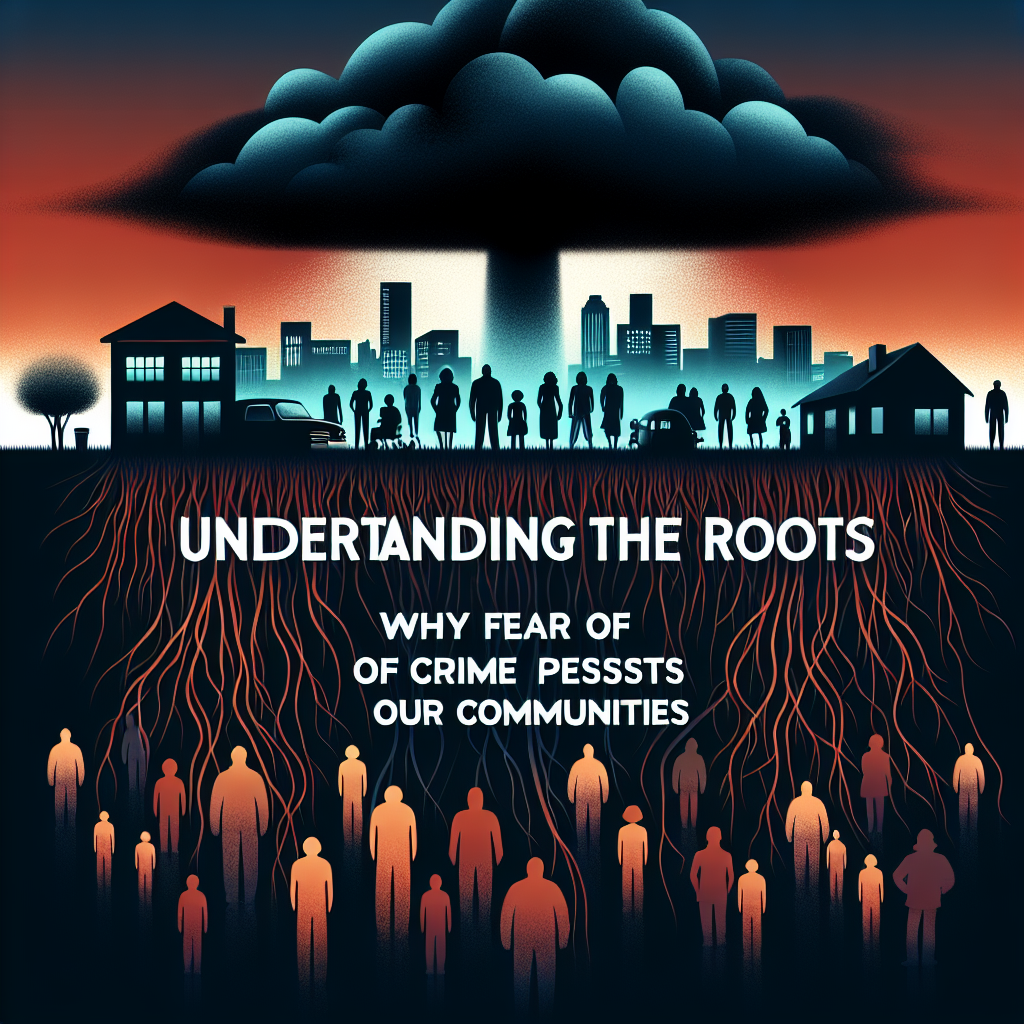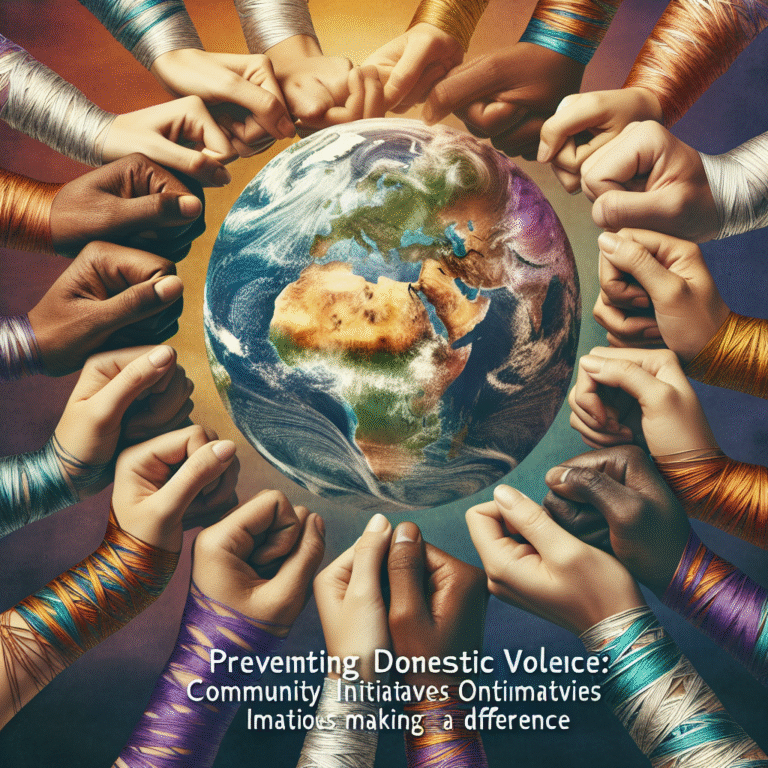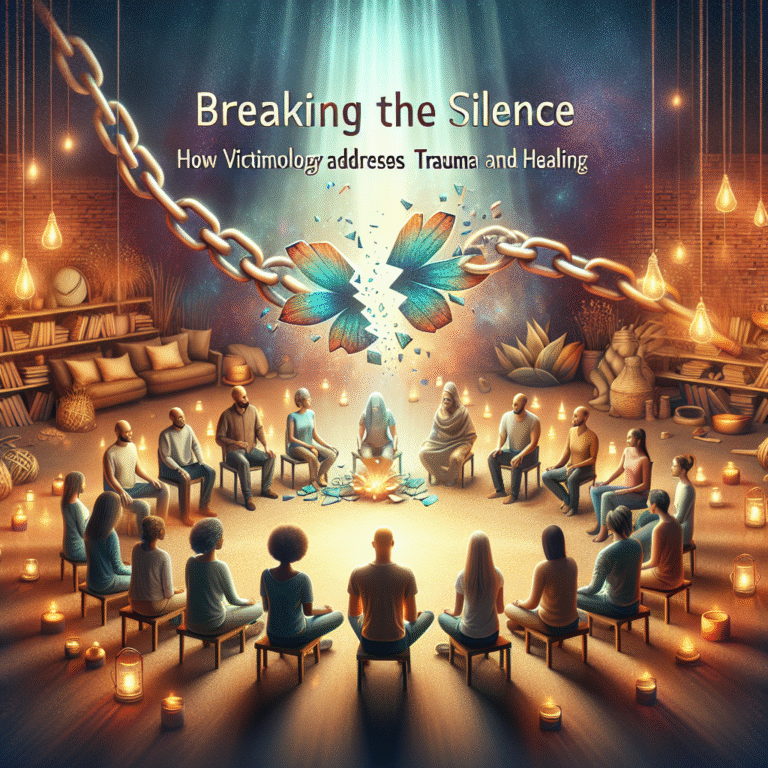
Introduction
Imagine walking home after work, the sun setting behind you, casting long shadows on the pavement. Suddenly, a flurry of anxious thoughts floods your mind: What if someone jumps out from the bushes? What if I become a victim of crime? These feelings are not uncommon; they ripple through communities, often leaving a trail of fear that overshadows everyday life. Understanding the roots of this pervasive fear is essential, not just for community safety, but also for fostering a sense of belonging and peace. This article delves deep into the complexities of why fear of crime persists in our communities, spotlighting sociological, psychological, and cultural dimensions.
The Historical Context of Fear
A Legacy of Violence
Fear has deep historical roots. Our ancestors lived in an environment where survival depended on vigilance against threats, both from the natural world and fellow humans. Understanding this historical context helps clarify why anxiety about crime remains potent. Regular exposure to crime, be it through personal experiences or local stories, shapes community perceptions and responses.
Media Influence: Amplifying Fear
In today’s digital age, media plays a significant role in shaping public perception. Understanding the Roots: Why Fear of Crime Persists in Our Communities requires acknowledging how news coverage can breed fear. For instance, sensational stories often focus on violent crimes, which tend to distort the actual crime rates. A study by the Pew Research Center revealed that 74% of people believe crime rates are higher than they were a decade ago, despite data showing a general decline in crime.
| Media Emphasis | Perceived Crime Rate |
|---|---|
| Violent Crime | Higher |
| Property Crime | Lower |
The graph above illustrates how sensational media skew public perception of crime. This kind of fear takes root in our communities, disconnecting the public from real statistics while creating an environment of anxiety.
Social Factors Fueling Fear
Economic Disparities
Economic inequality can exacerbate fears around crime. Communities with high poverty rates often face a dual burden: under-resourced social services and an abundance of crime. Understanding the Roots: Why Fear of Crime Persists in Our Communities necessitates exploring how neighborhoods suffering from economic hardships are prone to elevated levels of fear.
Case Study: Detroit, Michigan
Detroit provides an illustrative example. Once a thriving hub for the American automobile industry, it faced drastic economic decline, leading to a spike in crime rates. Residents reported feeling unsafe in their neighborhoods, which led to increased community vigilance, neighborhood watch groups, and even heightened police presence. Though efforts have mitigated some fears, an underlying anxiety persists, showcasing how economic factors perpetuate fear.
Community Cohesion
Strong social ties within communities can alleviate fear, but what happens when those ties are weak? Research suggests that communities lacking cohesion tend to amplify feelings of insecurity. When neighbors do not know each other, mistrust flourishes, making crimes feel more threatening.
Case Study: Neighborhood Watch Programs
Several neighborhoods in Chicago have successfully introduced Neighborhood Watch Programs. Enhanced social interaction has fostered friendships among residents, leading to reduced fears of crime and a relaxed atmosphere. When neighbors know one another, they’re less likely to perceive each other as threats.
Psychological Dimensions of Fear
Cognitive Biases
Psychological factors, such as cognitive biases, play a significant role in fear perception. Many people tend to focus on dramatic crimes rather than the mundane reality of their communities. This skewed perspective is heightened by our brain’s tendency to remember negative experiences more vividly than positive ones.
Fear Over Reality
This disconnect between perceived and actual risk fosters an irrational fear of crime. For example, according to the National Crime Victimization Survey, people perceive violent crime as more prevalent than it is, leading to unnecessary anxiety.
Case Study: Fears in Suburban Areas
Consider suburban neighborhoods where crime rates are low yet residents express heightened fear. Here, cognitive biases lead to an exaggerated sense of danger. Local crime statistics indicate safety, but the narrative often stuck in people’s minds is that crime is lurking around every corner. Communities in these areas have initiated educational campaigns to combat fear by promoting realistic understandings of security.
Cultural Dimensions of Fear
Influence of Cultural Narratives
Fear is not only a personal experience; it is also shaped by cultural narratives that dictate what is considered dangerous or threatening. Different cultural backgrounds may foster varying attitudes toward crime and safety.
Case Study: Immigrant Communities
Research shows that specific immigrant communities often wrestle with heightened fears of crime due to cultural narratives portraying their neighborhoods as unsafe. Understanding this fear requires a nuanced approach: leaders within these communities have launched initiatives to bridge gaps in cultural understanding, thus reducing fear and promoting unity.
Discrimination and Fear
Discrimination can exacerbate fear. Marginalized groups often experience heightened anxiety around crime due to systemic inequalities. Understanding the roots of this fear entails recognizing the role of discrimination in shaping community perceptions.
Addressing Community Fear
Community Policing
One proven way to combat fear is through community policing. This approach emphasizes collaboration between community members and law enforcement, fostering trust and safety.
Education and Awareness Campaigns
Education around actual crime rates can demystify fear. Community education initiatives, such as workshops and information sessions, provide accurate data that help undermine exaggerated fears.
| Strategy | Expected Outcome |
|---|---|
| Community Policing | Enhanced trust between police & residents |
| Educational Programs | Improved understanding of real crime rates |
Conclusion
Understanding the roots of fear in our communities is essential for cultivating a secure environment. By addressing historical legacies, social dynamics, psychological influences, and cultural narratives, we can tackle the pervasive fear of crime. This effort encourages dialogue, builds community trust, and inspires collective action.
Takeaway: Embrace open communication in your community. Understand that your voice adds value and some safety. Together, we can break the cycle of fear and foster safer, more connected communities.
FAQs
-
Why does fear of crime persist even in low-crime areas?
- Fear often stems from cognitive biases, media portrayal, and community narratives, leading people to perceive danger where little exists.
-
How does media consumption influence fear of crime?
- Sensationalized news coverage can distort perceptions of crime, making communities believe that crime is more prevalent than it is.
-
What role do socioeconomic factors play in community fear?
- Areas with high levels of poverty typically experience greater crime rates, contributing to the overarching fear in those communities.
-
Can community programs reduce fear of crime?
- Yes! Initiatives like Neighborhood Watch programs and community policing build trust and improve communication, reducing fear.
- Is fear of crime more prevalent in certain cultural communities?
- Yes, different cultural backgrounds influence perceptions of crime, often illuminating disparities in how communities experience and address fear.
By diving into these diverse layers of fear, we bring understanding, solutions, and hope to our communities, paving the way for a more secure future. Understanding the roots is the first step towards creating lasting change in our neighborhoods.


















